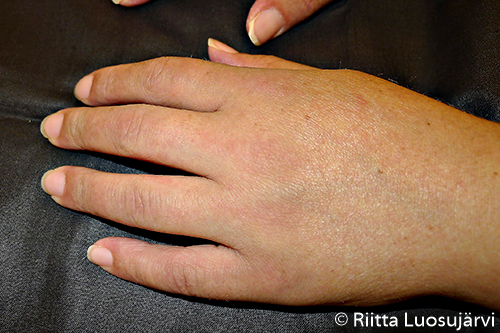Incipient Systemic Sclerosis

Incipient systemic sclerosis. Diffuse oedema of the hand in a patient with incipient systemic sclerosis. The skin is taut all over and there is no pitting when pressure is applied. As the disease progresses, oedema will subside, the skin will get gradually thicker and harder, and scleroderma will form.
Picture and text: Riitta Luosujärvi
Primary/Secondary Keywords
- systemic sclerosis
- scleroderma
- oedema
- swelling
- skin
- hand
- diffuse oedema
- skin oedema